1. What is MOTS-c?
MOTS-c is a short peptide encoded in the mitochondrial genome and a member of the larger group of mitochondrial-derived peptides (MDPs). MDPs have recently been found to be bioactive hormones that play important roles in mitochondrial communication and energy regulation. Originally thought to be related to the mitochondria only, new research has revealed that many MDPs are active in the cell nucleus and that some even make their way into the blood stream to have systemic effects. MOTS-c is a newly identified MDP that has, to date, been found to play important roles in metabolism, weight regulation, exercise capacity, longevity, and even processes leading to disease states like osteoporosis. MOTS-c has been found in the nucleus of cells as well as in the general circulation, making it a bonafide natural hormone. The peptide has been targeted for intensive research in the last five years due to its therapeutic potential.
2. MOTS-c Structure

【pictures linking,https://commons.wikimedia.org/w/index.php?curid=63627839】
Sequence: Met-Arg-Trp-Gln-Glu-Met-Gly-Tyr-lle-Phe-Tyr-Pro-Arg-Lys-Leu-Arg
Molecular Formula: C101H152N28O22S2
Molecular Weight:2174.64 g/mol
PubChem SID: 255386757
CAS Number:1627580-64-6
Synonyms: Mitochondrial open reading frame of the 12S rRNA-c, MT-RNR1
3. MOTS-c Research
MOTS c (mitochondrial open reading frame of the 12S rRNA c) is a 16-amino-acid peptide encoded by the mitochondrial genome, discovered around 2015. It functions as a “mitokine” or mitochondrial hormone, coordinating cellular metabolism, stress response, and system-wide homeostasis.
【1】Exercise-Responsive & Aging-Modulated
In humans, a single cycling session increases skeletal muscle MOTS c 11.9-fold, and plasma levels ~1.6-fold—effects that persist for hours post-exercise 【https://en.wikipedia.org/wiki/MOTS-c?utm_source=chatgpt.com】.
Its expression declines with age: older adults show significantly lower circulating MUSC c, with young individuals exhibiting 11–21% higher levels 【https://pmc.ncbi.nlm.nih.gov/articles/PMC9905433/?utm_source=chatgpt.com】.
In mice and humans, low MOTS c correlates with metabolic dysfunction, including type 2 diabetes, obesity, heart disease, gestational diabetes, and coronary issues 【https://www.frontiersin.org/journals/physiology/articles/10.3389/fphys.2025.1602271/full?utm_source=chatgpt.com】.
⚙️【2】 Mechanism of Action
AMPK activation: MOTS c improves glucose uptake and mitochondrial biogenesis, especially in muscle and heart cells 【https://pmc.ncbi.nlm.nih.gov/articles/PMC9905433/?utm_source=chatgpt.com】.
Nuclear translocation: Under metabolic stress, MOTS c moves into the nucleus, regulating transcription programs linked to proteostasis, stress resistance, and metabolic homeostasis .
Nrf2 pathway: MOTS c activates the Nrf2/ARE axis—elevating antioxidants like NQO1 and HO 1—protecting cells from oxidative or radiation-induced damage 【https://www.mdpi.com/2076-3921/13/5/613?utm_source=chatgpt.com】.
【3】Physiological & Preclinical Outcomes
Exercise mimetic: Improves running endurance and rotarod performance in young, middle-aged, and old mice【https://www.nature.com/articles/s41467-020-20790-0?utm_source=chatgpt.com】.
Obesity & diabetes reversal: Prevents weight gain and insulin resistance in high-fat-diet mice, restoring older mice’s insulin sensitivity within a week 【https://pmc.ncbi.nlm.nih.gov/articles/PMC9905433/?utm_source=chatgpt.com】.
Cardiac protection: Prevents ventricular remodeling and dysfunction in diabetic or post-overload hearts, improves mitochondrial respiration via AMPK.
Radiation pneumonitis protection: In animal lung models, MOTS c reduces inflammation, apoptosis, ROS buildup, and preserves mitochondrial function through Nrf2 activation .
✅ Why Consider MOTS c?
⏱️ Exercise mimetic: Boosts energy metabolism and performance even in sedentary or aged individuals.
🍽️ Glucose & insulin regulation: Enhances skeletal muscle insulin sensitivity and prevents obesity.
🫀 Cardiovascular protection: Guards against heart failure and ROS-related damage.
🛡️ Cellular defense & longevity: Activates AMPK and Nrf2, improving antioxidant and proteostatic resilience.
👵 Supports healthy aging: Youth-like MOTS c levels in older subjects rejuvenate metabolic capacity.
💡 Therapeutic versatility: Potential treatments span metabolic, cardiovascular, respiratory, aging, and radiation-related disorders.
4. Future MOTS c Research
Human Clinical Trials
CB4211 (synthetic MOTS c analog) completed Phase 1a trials in obese/NAFLD patients—appearing safe, AMPK-activating, awaiting clinical results 【https://www.alzdiscovery.org/uploads/cognitive_vitality_media/MOTS-c.pdf?utm_source=chatgpt.com】.
Delivery & Stability Optimization
Investigating oral, intranasal, subdermal, or probiotic expression systems for sustained, site-specific MOTS c delivery .
Sex-Specific Efficacy
Noted sex-differences: men may benefit more—future personalized dosing required .
Disease-Specific Applications
Ongoing research targeting T2D, NAFLD, cardiomyopathy, radiation injury, exercise intolerance, and age-related decline 【https://translational-medicine.biomedcentral.com/articles/10.1186/s12967-023-03885-2/metrics?utm_source=chatgpt.com】.
Molecular Mechanisms & Safety
Still exploring peptide uptake, off-target signaling, receptor partners (e.g., CK2), and long-term safety to assess tumor or stem cell risks .
5. Application Areas
Metabolic Health: Glucose regulation, insulin sensitivity, obesity prevention
Sports & Aging: Enhances performance, slows sarcopenia, boosts metabolic flexibility
Cardio protective Therapies: Counteracts diabetes-induced heart dysfunction
Radiation & Oxidative Protection: Guards lung, heart, and other organs during radiation therapy
Longevity Interventions: Aligns age-related metabolic resilience with rejuvenation goals
Stress & Recovery: Supports hormesis and adaptation via AMPK/Nrf2 activation
⚠️6. Safety & Considerations
Preclinical stage: Mostly tested in animals; human data are limited and mostly safety-oriented 阿尔茨海默病发现组织.
Stability challenges: Degrades quickly without proper storage; dosing consistency is critical 维基百科+3阿尔茨海默病发现组织+3物理学会在线图书馆+3.
Potential drug-drug interactions: Particularly with AMPK modulators like metformin 阿尔茨海默病发现组织+1Frontiers+1.
Sex- & age-sensitive dosing: Tailored protocols likely required; current range unknown.
Synthetic quality gap: Ensure GMP-level production due to variable supplement market.
✅ Summary
MOTS c is a mitochondrial-derived peptide with major promise across multiple domains—from metabolic therapy and physical resilience to cardioprotection, radiation defense, and healthy aging. Acting via AMPK, nuclear transcription, and mitochondrial-nuclear communication, it presents a uniquely integrated therapeutic candidate. While human clinical data is emerging, advanced delivery systems and safety profiling will determine its future real-world applicability.
ALL ARTICLES AND PRODUCT INFORMATION PROVIDED ON THIS WEBSITE ARE FOR INFORMATONAL AND EDUCATIONAL PURPOSES ONLY.
The products offered on this website are furnished for in-vitro studies only. In-vitro studies(Latin: in glass) are performed outside of the body. These products are not medicines or drugs and have not been approved by the FDA to prevent, treat or cure any medical condition, ailment or disease. Bodily introduction of any kind into humans or animals is strictly forbidden by law.

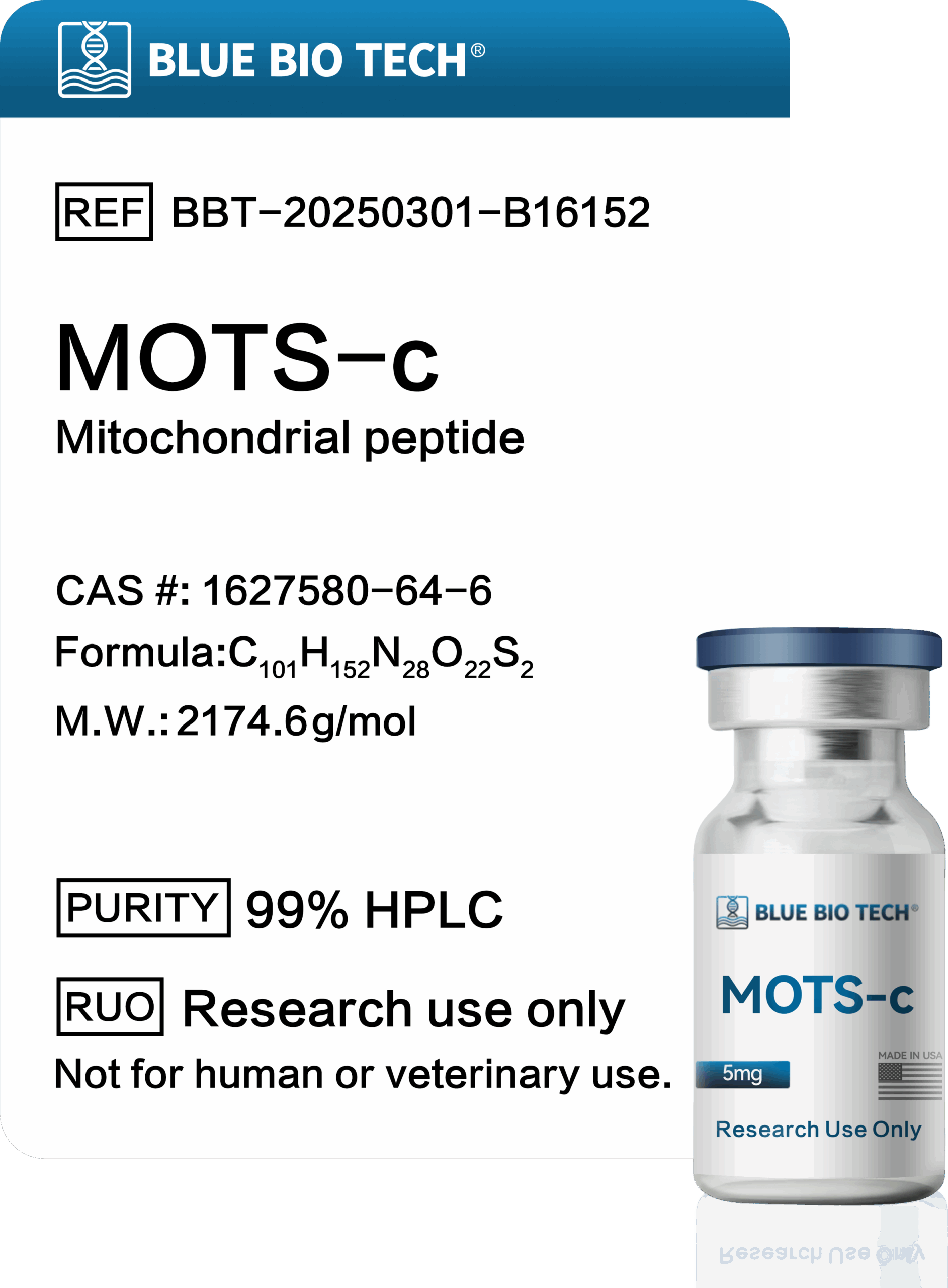
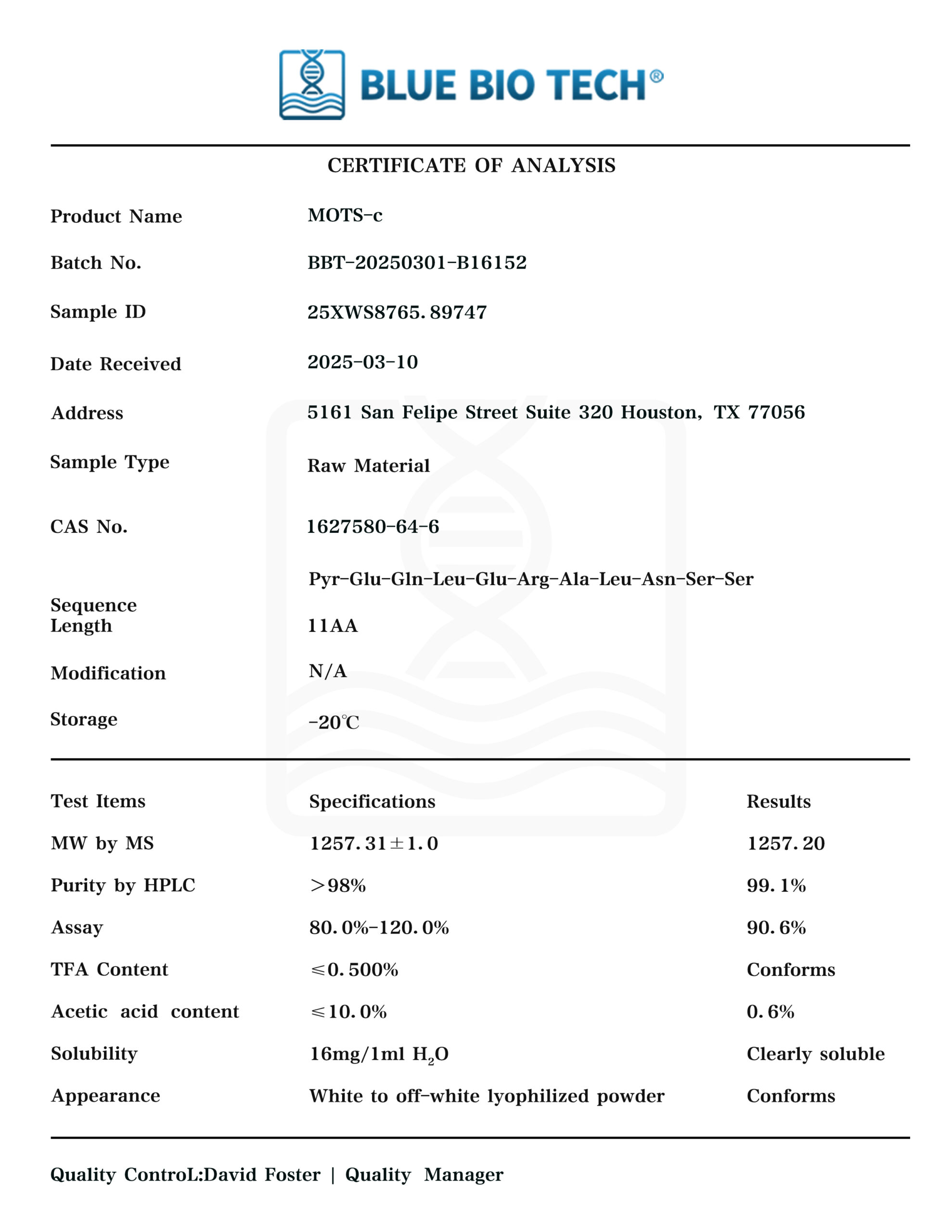
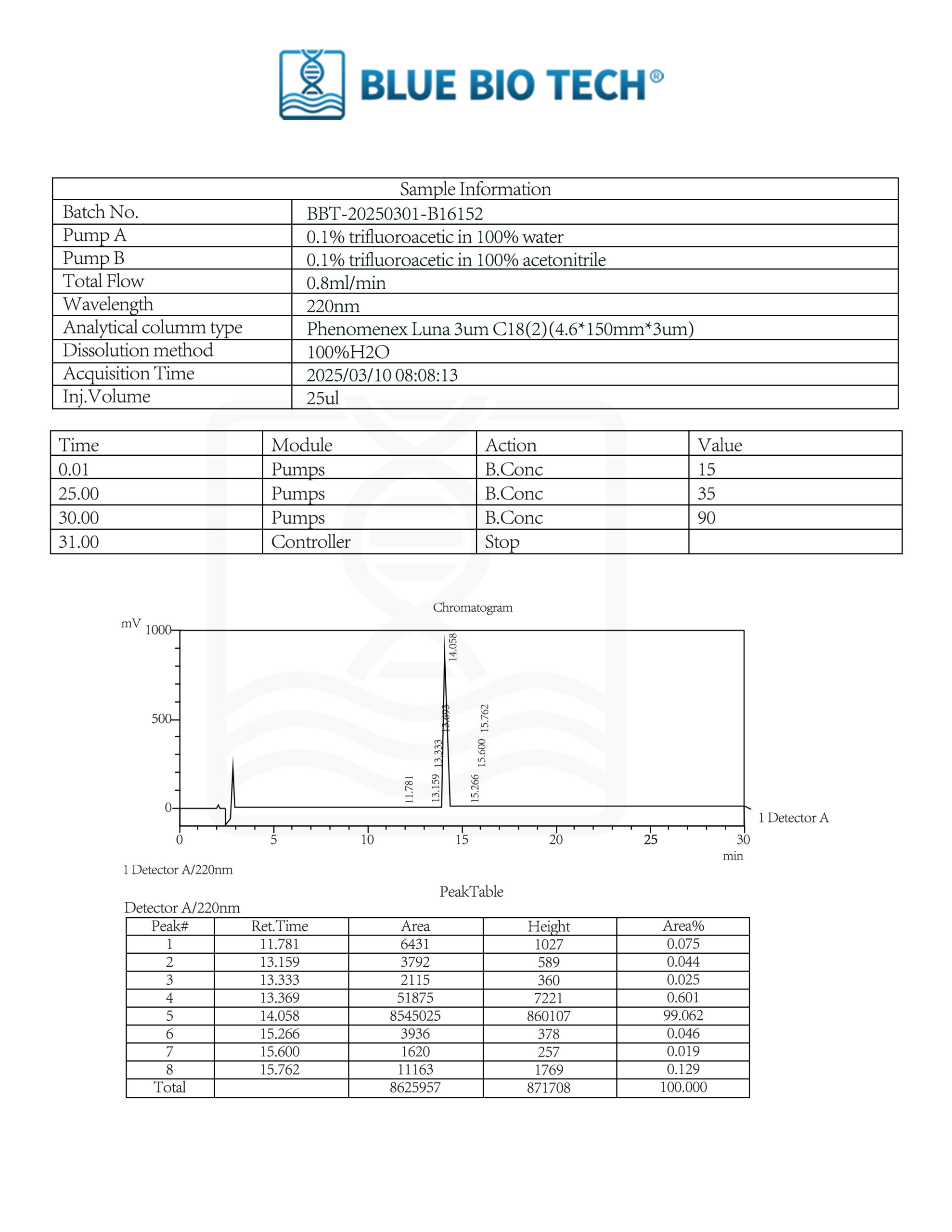
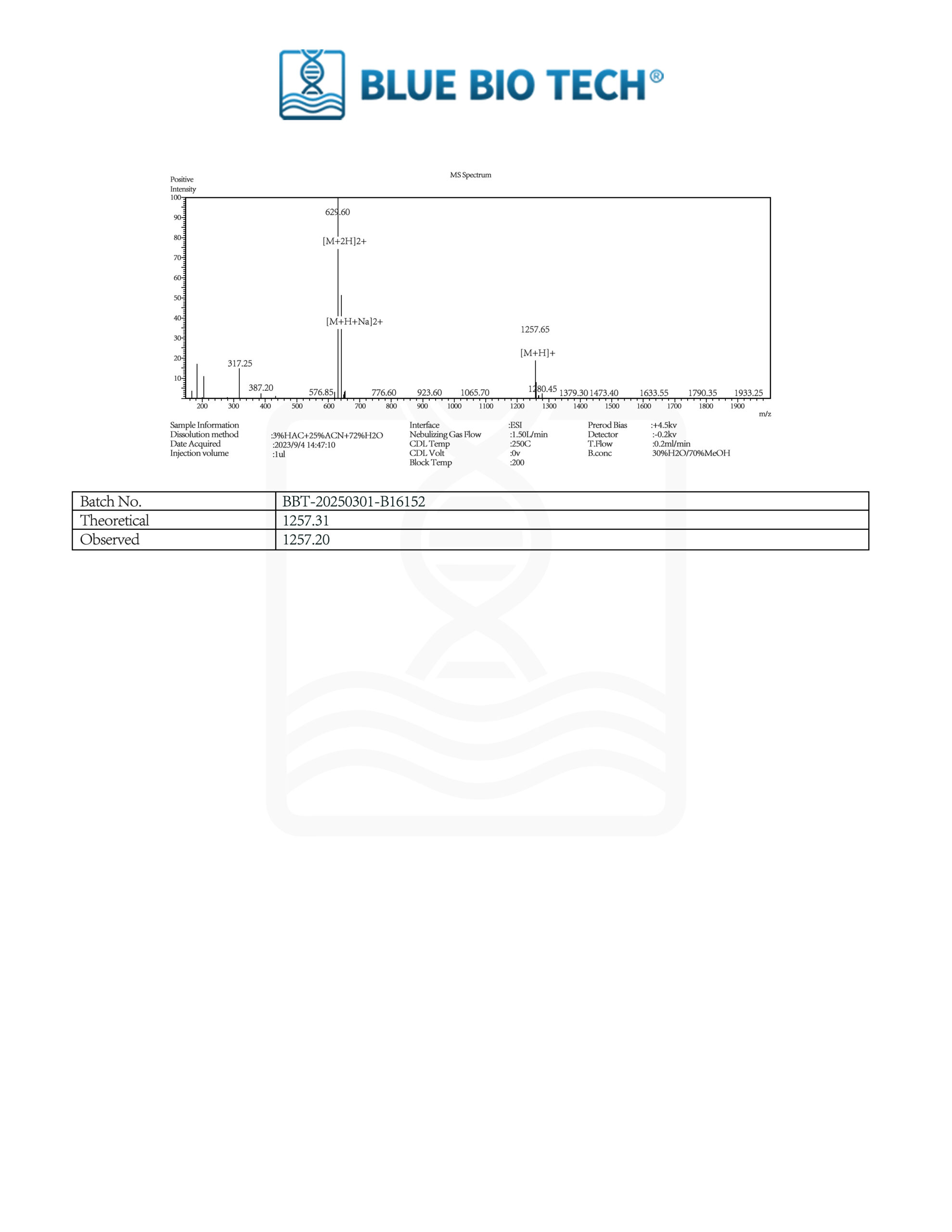
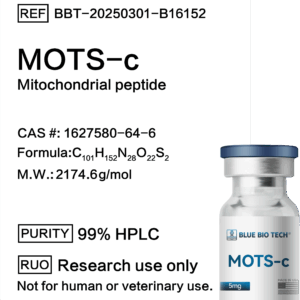
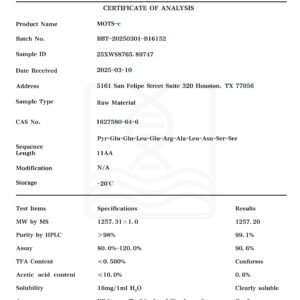
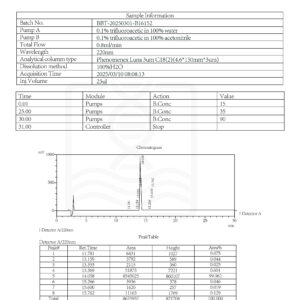
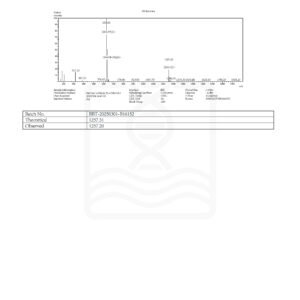
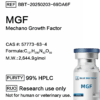
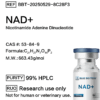
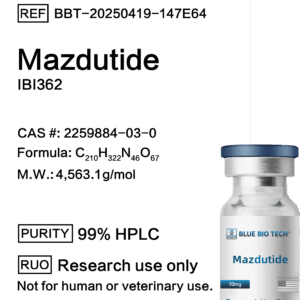
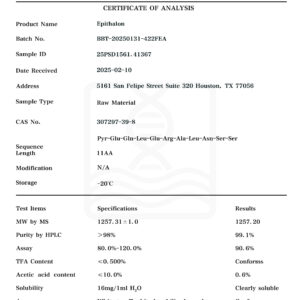
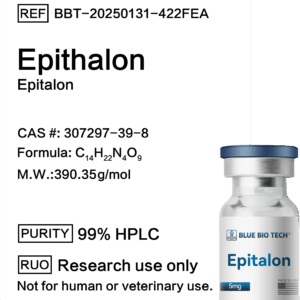
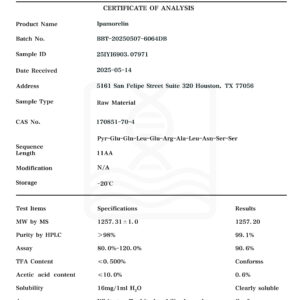
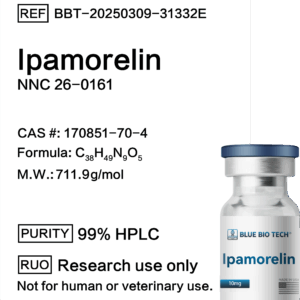
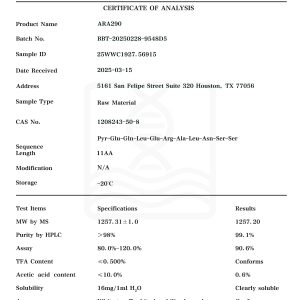
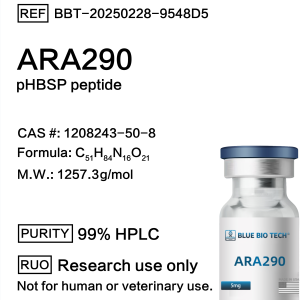
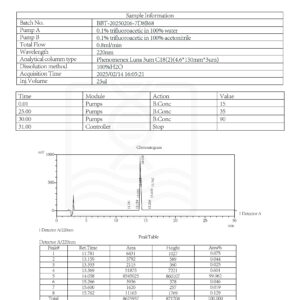
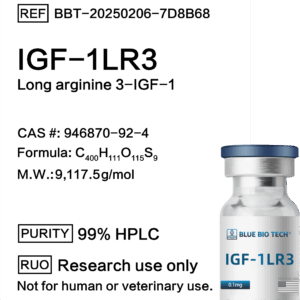
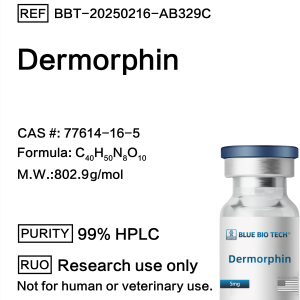
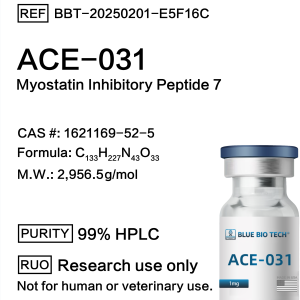
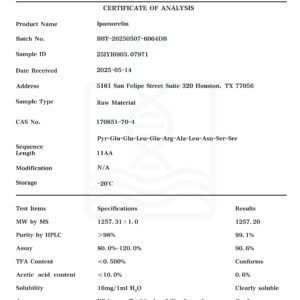
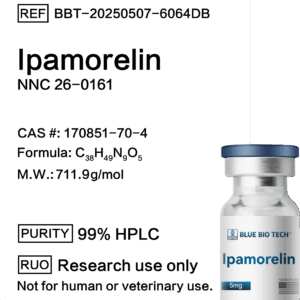
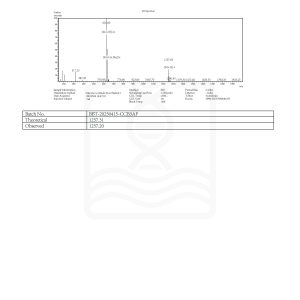

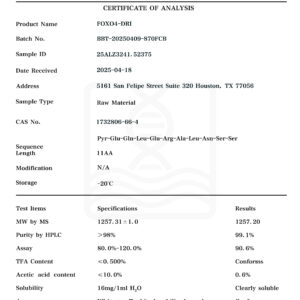
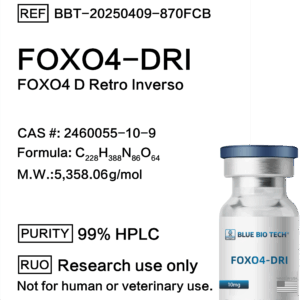

Reviews
There are no reviews yet.